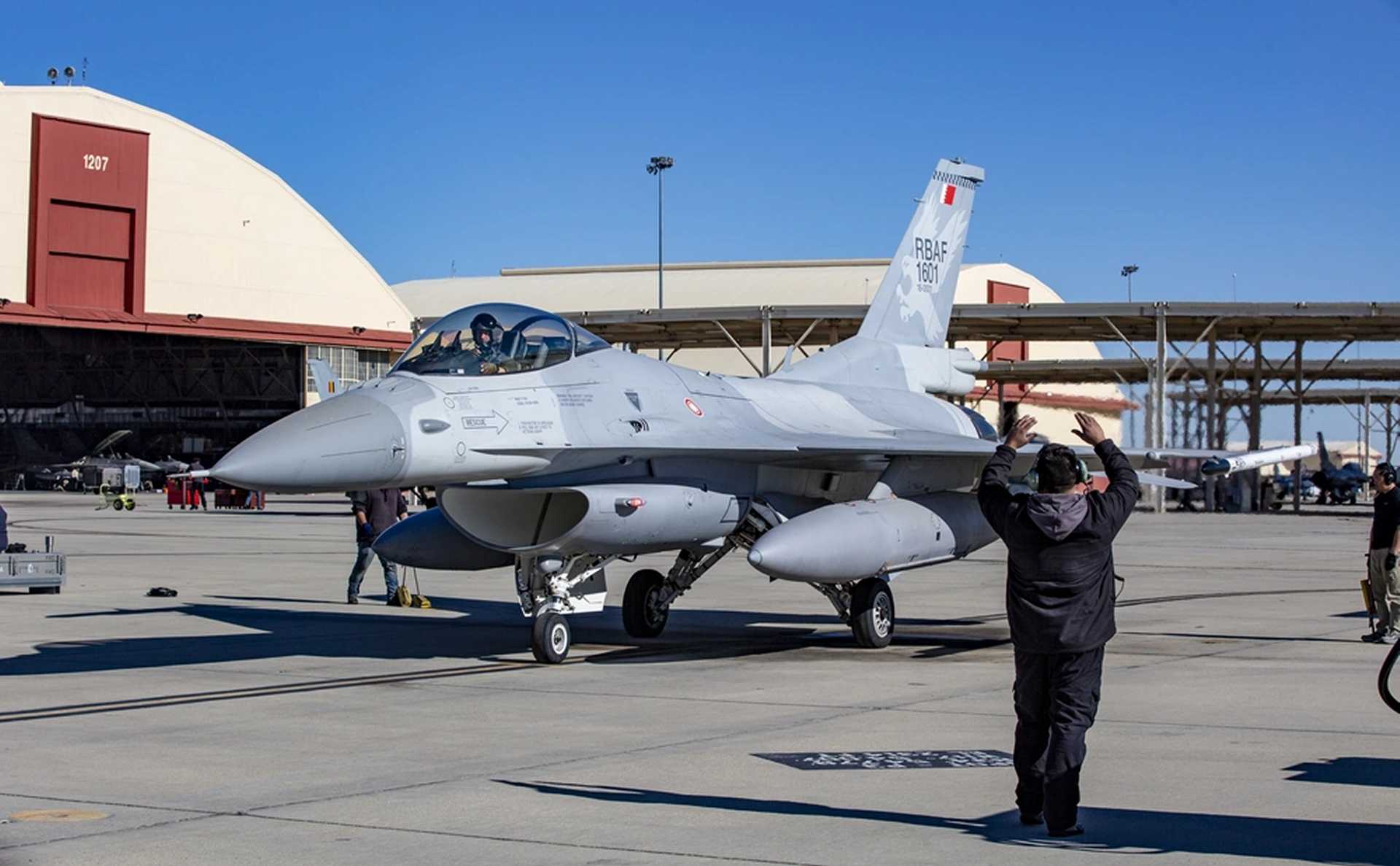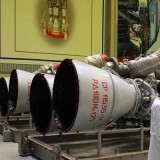New Viper Shield electronic warfare system allows the US-made F-16 Block 70 fighter to jam enemy missiles

{loadposition bannertop}
{loadposition sidebarpub}
As reported by the US Department of Defense on January 23, 2025, the first F-16 equipped with the Viper Shield electronic warfare package conducted its initial flight at Edwards Air Force Base in California. The test aircraft, an F-16 Block 70 of the Royal Bahraini Air Force (tail number RBAF 1601), was piloted by Maj. Anthony Pipe from the 416th Flight Test Squadron. This test is part of an ongoing assessment of the system’s capabilities and its integration with the F-16 platform, supporting future operational deployment among multiple international users.Follow Army Recognition on Google News at this link
The flight test focused on assessing compatibility with the aircraft’s avionics and mission systems, as well as verifying risk mitigation measures for integration with existing electronic systems, ensuring that the system functions as expected. (Picture source: Lockheed Martin)
The Viper Shield system has been developed by L3Harris Technologies and Lockheed Martin as part of the companies’ broader electronic warfare programs. Its design is based on previous generations of electronic countermeasure technologies but incorporates an all-digital architecture. Safety of flight qualifications was completed in late 2024, ensuring structural, thermal, and electrical compliance. The system leverages commercial off-the-shelf (COTS) components to facilitate production efficiency and long-term adaptability. The manufacturing process began on September 17, 2024, at the L3Harris facility in Clifton, New Jersey, supporting integration timelines for multiple customer nations.
The AN/ALQ-254(V)1 Viper Shield is an internally mounted electronic warfare suite designed to enhance the F-16’s survivability against modern radar and electronic threats. It integrates directly with the aircraft’s avionics suite and works alongside the APG-83 AESA radar. The system includes a digital radar warning receiver (DRWR) to detect and classify threats, providing real-time situational awareness to pilots. Unlike externally mounted electronic warfare pods, Viper Shield maintains the aircraft’s aerodynamic profile and preserves external hardpoints for mission payloads.
The system’s countermeasure capabilities are based on digital radio frequency memory (DRFM)-based jamming, which disrupts radar targeting systems. It consists of six line-replaceable units (LRUs) that allow for modular repairs and upgrades without requiring extensive downtime. A dedicated cockpit display provides pilots with immediate feedback on detected threats and defensive countermeasures. The system’s architecture enables rapid responses to electronic threats while allowing for incremental upgrades as new threats emerge.
One of the key technical advantages of Viper Shield is its open-system architecture, which allows for software-based modifications without the need for hardware replacements. The reduction in critical components compared to previous-generation systems improves the mean time between failures and lowers overall lifecycle costs. The system is fully compatible with the current Modular Mission Computer (MMC) and is designed to integrate with the Next Generation Mission Computer (NGMC), ensuring continued relevance as avionics technology advances.
The APG-83 AESA radar, integrated with Viper Shield, provides enhanced detection, tracking, and targeting capabilities compared to legacy radar systems. It improves the F-16’s effectiveness in air-to-air and air-to-ground engagements while maintaining situational awareness in electronic warfare environments. The radar has been fielded in U.S. Air National Guard units and tested in multiple operational scenarios, including cruise missile defense exercises. During Guardian Shield 20-02, the APG-83 demonstrated its capability to detect and track simulated cruise missile threats across a large area.
The Viper Shield is planned for deployment across six confirmed international customers, with a seventh under negotiation, and is primarily designed for the F-16 Block 70. Bahrain, Bulgaria, Jordan, Morocco, Slovakia, and Taiwan have committed to integrating the system into their F-16 fleets. A total of 168 new F-16s are expected to be equipped with Viper Shield, while additional retrofitting efforts are being explored for older aircraft. Poland has received approval for a Mid-Life Upgrade (MLU) package for its fleet of 48 F-16C/D Block 52+ aircraft, which may include either Viper Shield or an equivalent system.
The F-16 Block 70 incorporates multiple structural and avionics upgrades, extending its service life to 12,000 hours. The aircraft features the APG-83 radar, enhanced mission computers, and updated weapons integration capabilities. Viper Shield is the baseline electronic warfare system for the Block 70, ensuring enhanced defensive capabilities against evolving threats. The platform remains in active production, with multiple nations placing orders to modernize their fighter fleets. The U.S. Air Force and allied operators are expected to continue evaluating system improvements to maintain operational effectiveness over the aircraft’s lifespan.

{loadposition bannertop}
{loadposition sidebarpub}
As reported by the US Department of Defense on January 23, 2025, the first F-16 equipped with the Viper Shield electronic warfare package conducted its initial flight at Edwards Air Force Base in California. The test aircraft, an F-16 Block 70 of the Royal Bahraini Air Force (tail number RBAF 1601), was piloted by Maj. Anthony Pipe from the 416th Flight Test Squadron. This test is part of an ongoing assessment of the system’s capabilities and its integration with the F-16 platform, supporting future operational deployment among multiple international users.
Follow Army Recognition on Google News at this link
The flight test focused on assessing compatibility with the aircraft’s avionics and mission systems, as well as verifying risk mitigation measures for integration with existing electronic systems, ensuring that the system functions as expected. (Picture source: Lockheed Martin)
The Viper Shield system has been developed by L3Harris Technologies and Lockheed Martin as part of the companies’ broader electronic warfare programs. Its design is based on previous generations of electronic countermeasure technologies but incorporates an all-digital architecture. Safety of flight qualifications was completed in late 2024, ensuring structural, thermal, and electrical compliance. The system leverages commercial off-the-shelf (COTS) components to facilitate production efficiency and long-term adaptability. The manufacturing process began on September 17, 2024, at the L3Harris facility in Clifton, New Jersey, supporting integration timelines for multiple customer nations.
The AN/ALQ-254(V)1 Viper Shield is an internally mounted electronic warfare suite designed to enhance the F-16’s survivability against modern radar and electronic threats. It integrates directly with the aircraft’s avionics suite and works alongside the APG-83 AESA radar. The system includes a digital radar warning receiver (DRWR) to detect and classify threats, providing real-time situational awareness to pilots. Unlike externally mounted electronic warfare pods, Viper Shield maintains the aircraft’s aerodynamic profile and preserves external hardpoints for mission payloads.
The system’s countermeasure capabilities are based on digital radio frequency memory (DRFM)-based jamming, which disrupts radar targeting systems. It consists of six line-replaceable units (LRUs) that allow for modular repairs and upgrades without requiring extensive downtime. A dedicated cockpit display provides pilots with immediate feedback on detected threats and defensive countermeasures. The system’s architecture enables rapid responses to electronic threats while allowing for incremental upgrades as new threats emerge.
One of the key technical advantages of Viper Shield is its open-system architecture, which allows for software-based modifications without the need for hardware replacements. The reduction in critical components compared to previous-generation systems improves the mean time between failures and lowers overall lifecycle costs. The system is fully compatible with the current Modular Mission Computer (MMC) and is designed to integrate with the Next Generation Mission Computer (NGMC), ensuring continued relevance as avionics technology advances.
The APG-83 AESA radar, integrated with Viper Shield, provides enhanced detection, tracking, and targeting capabilities compared to legacy radar systems. It improves the F-16’s effectiveness in air-to-air and air-to-ground engagements while maintaining situational awareness in electronic warfare environments. The radar has been fielded in U.S. Air National Guard units and tested in multiple operational scenarios, including cruise missile defense exercises. During Guardian Shield 20-02, the APG-83 demonstrated its capability to detect and track simulated cruise missile threats across a large area.
The Viper Shield is planned for deployment across six confirmed international customers, with a seventh under negotiation, and is primarily designed for the F-16 Block 70. Bahrain, Bulgaria, Jordan, Morocco, Slovakia, and Taiwan have committed to integrating the system into their F-16 fleets. A total of 168 new F-16s are expected to be equipped with Viper Shield, while additional retrofitting efforts are being explored for older aircraft. Poland has received approval for a Mid-Life Upgrade (MLU) package for its fleet of 48 F-16C/D Block 52+ aircraft, which may include either Viper Shield or an equivalent system.
The F-16 Block 70 incorporates multiple structural and avionics upgrades, extending its service life to 12,000 hours. The aircraft features the APG-83 radar, enhanced mission computers, and updated weapons integration capabilities. Viper Shield is the baseline electronic warfare system for the Block 70, ensuring enhanced defensive capabilities against evolving threats. The platform remains in active production, with multiple nations placing orders to modernize their fighter fleets. The U.S. Air Force and allied operators are expected to continue evaluating system improvements to maintain operational effectiveness over the aircraft’s lifespan.




